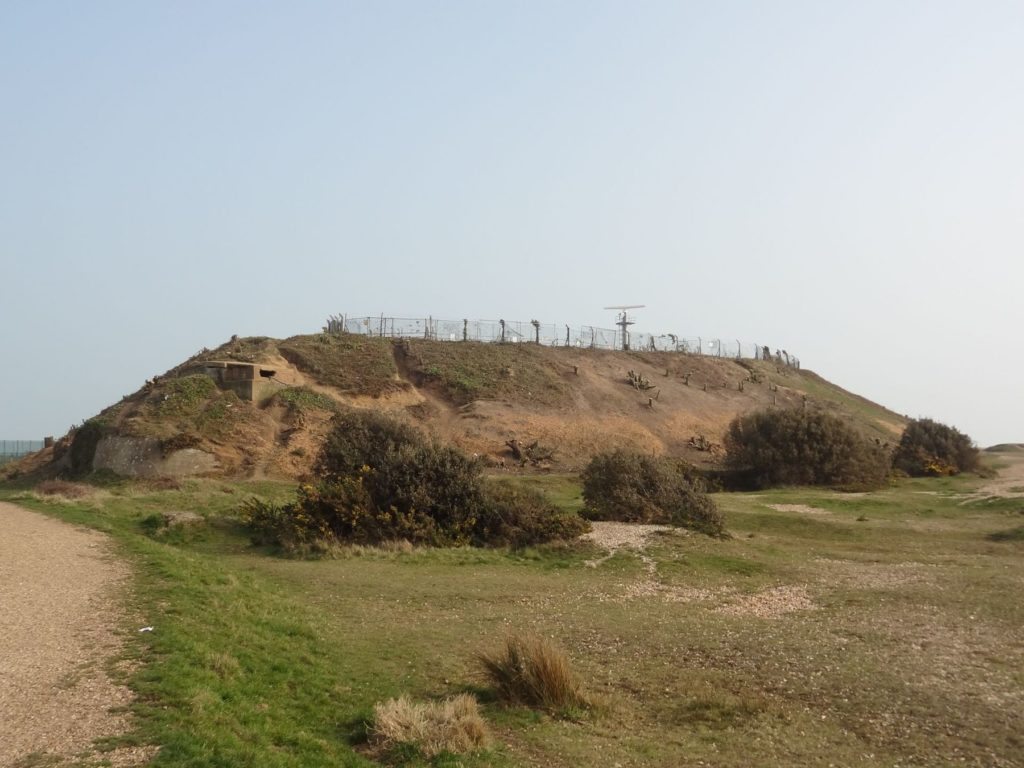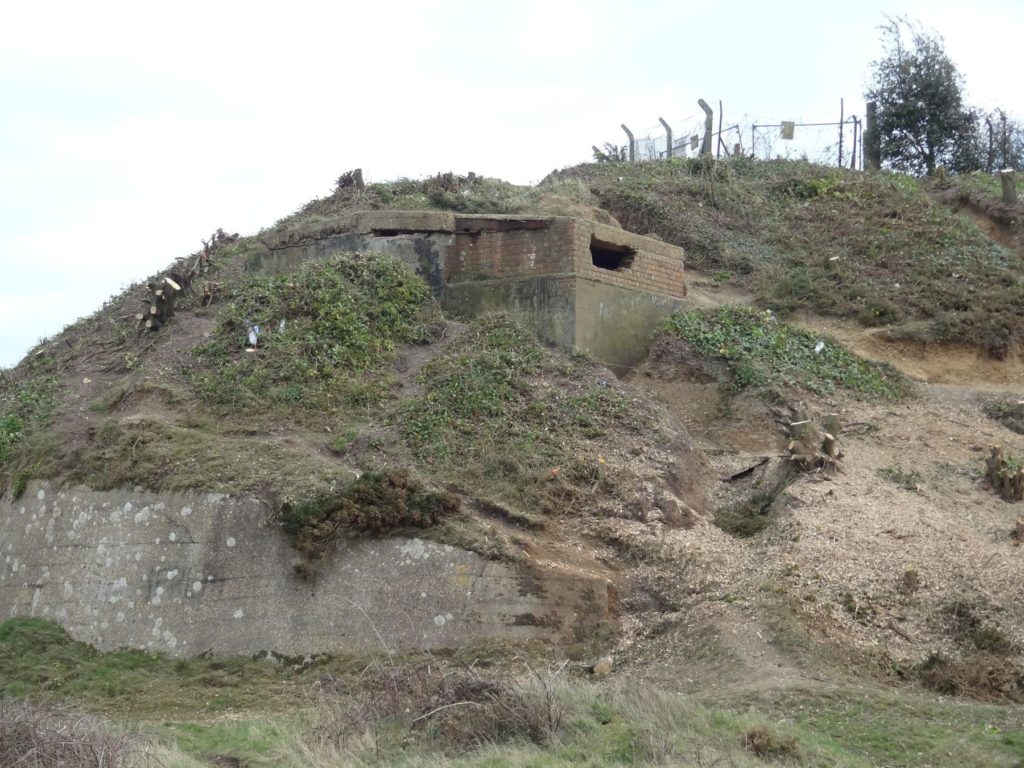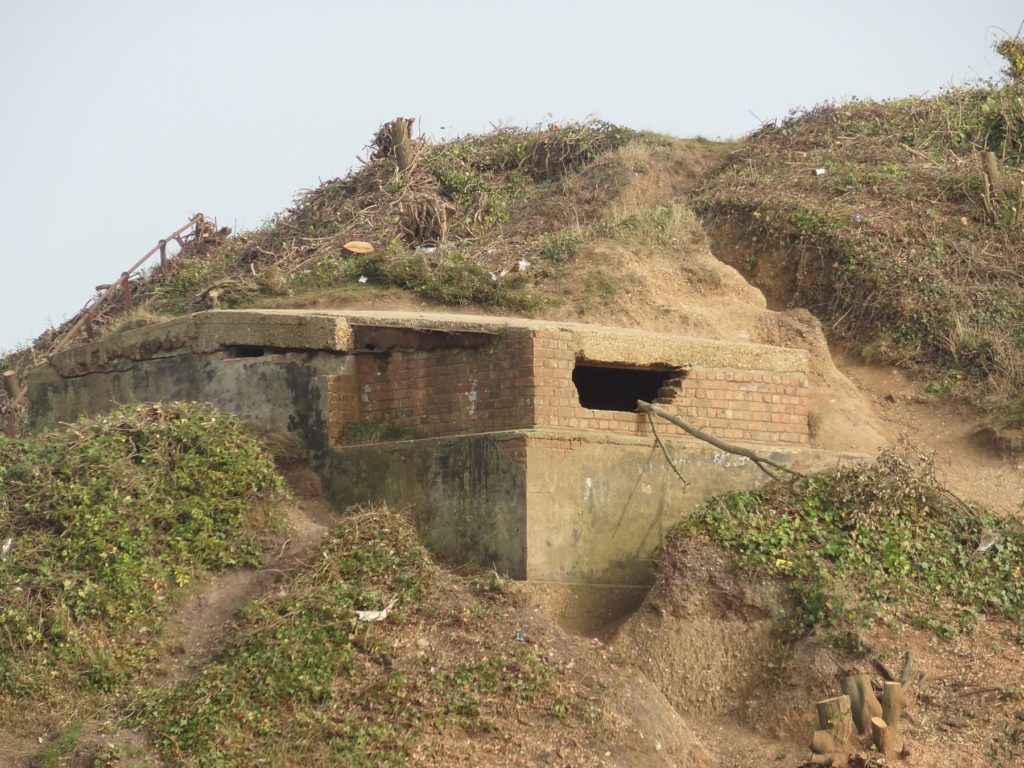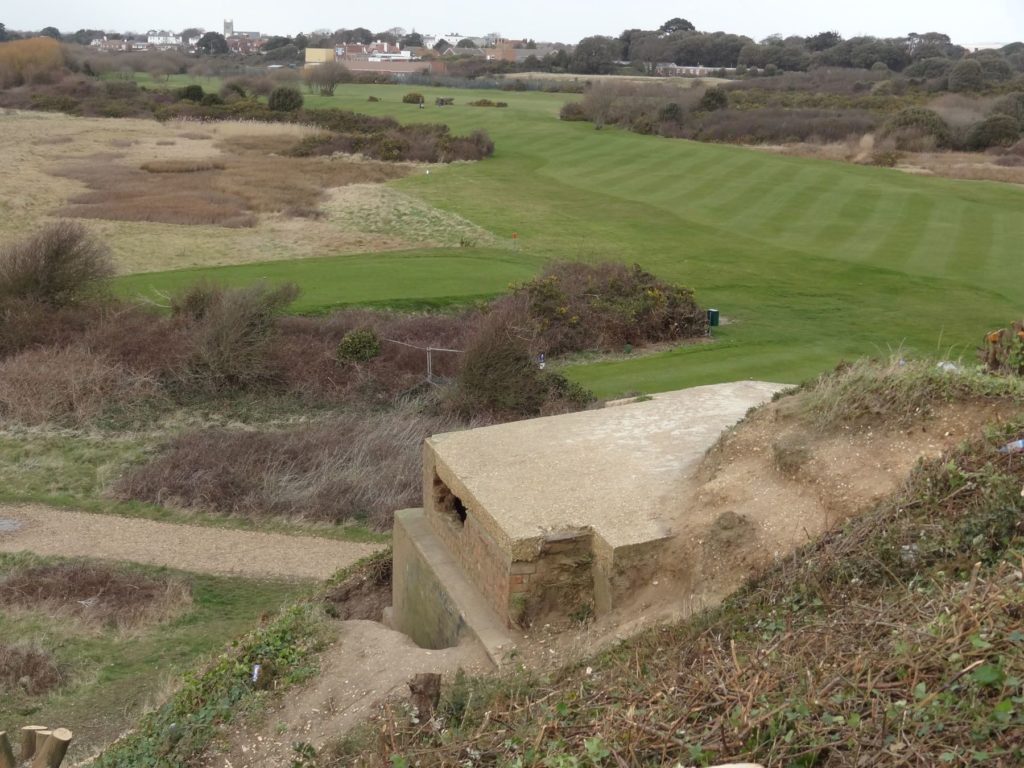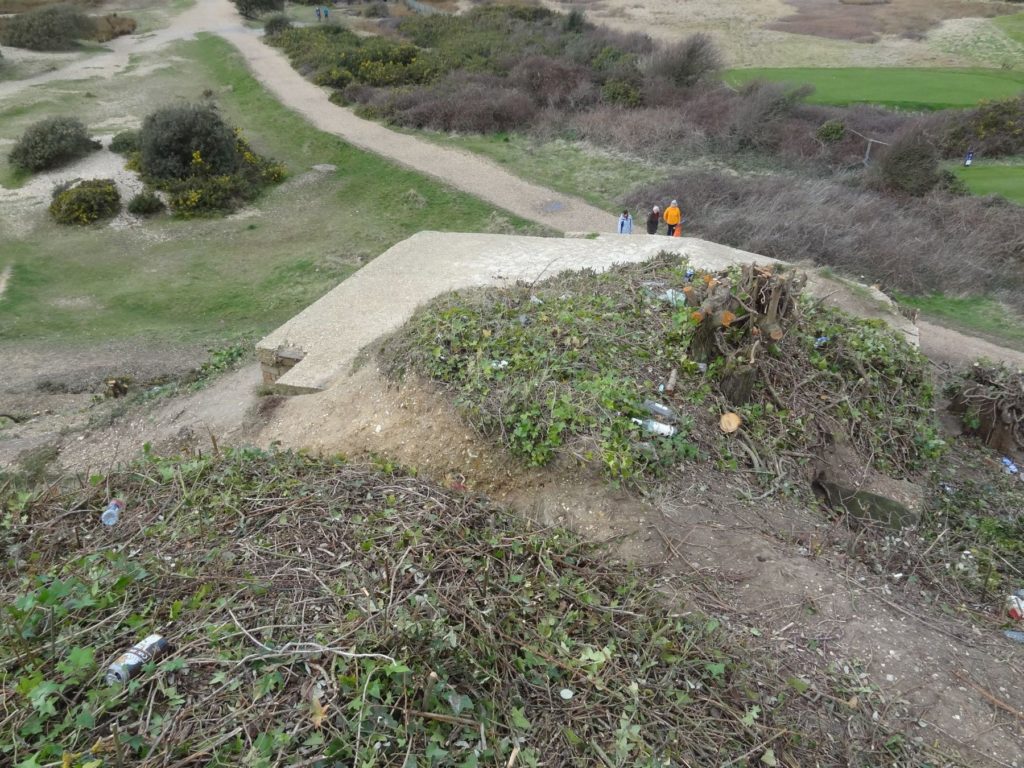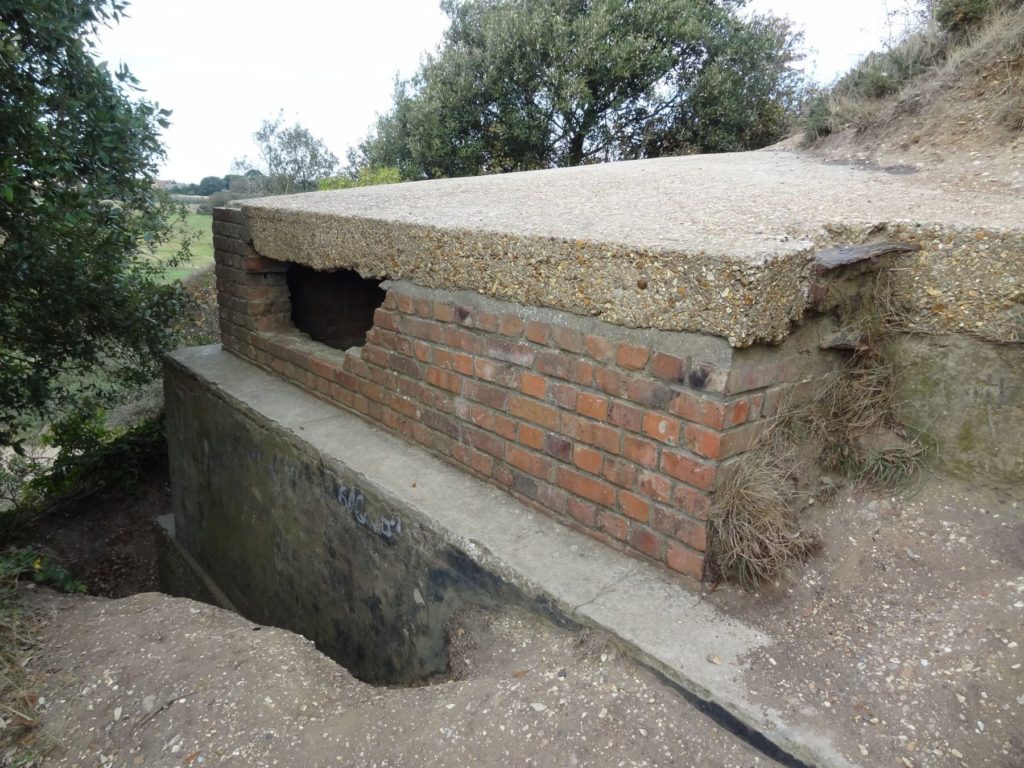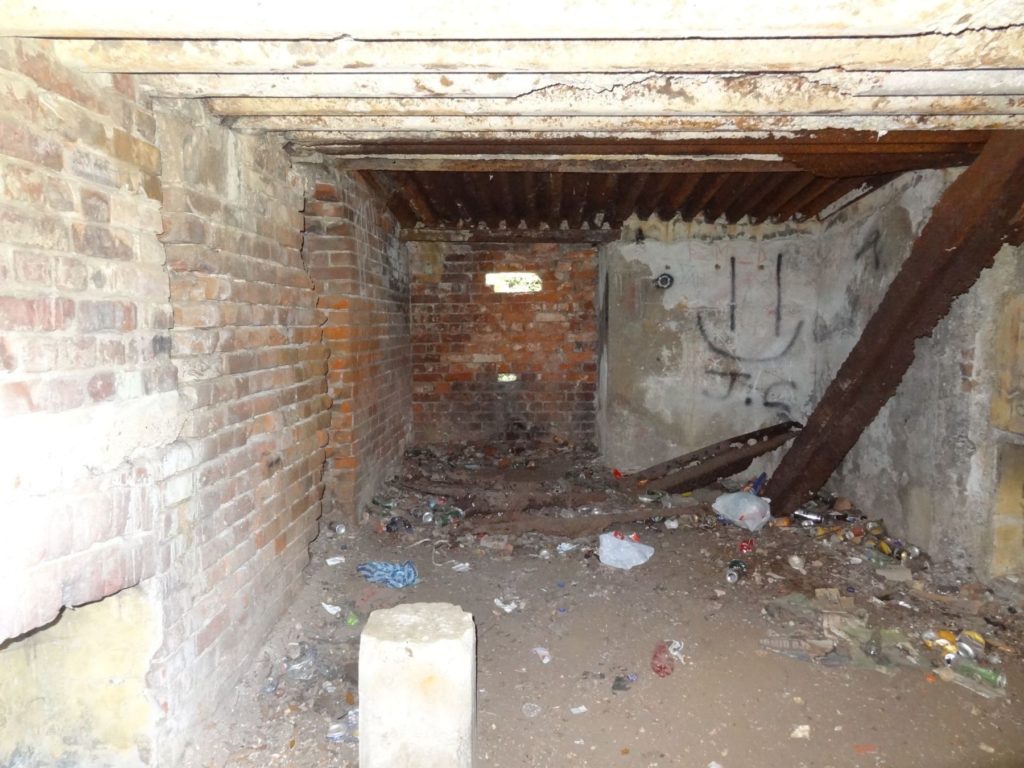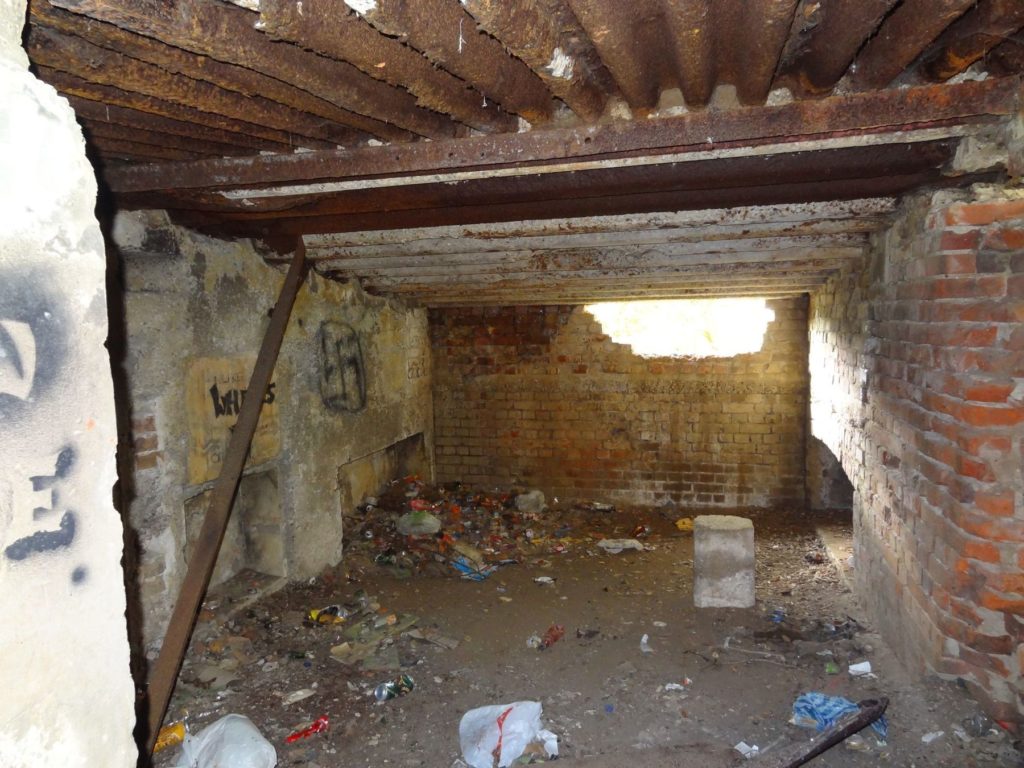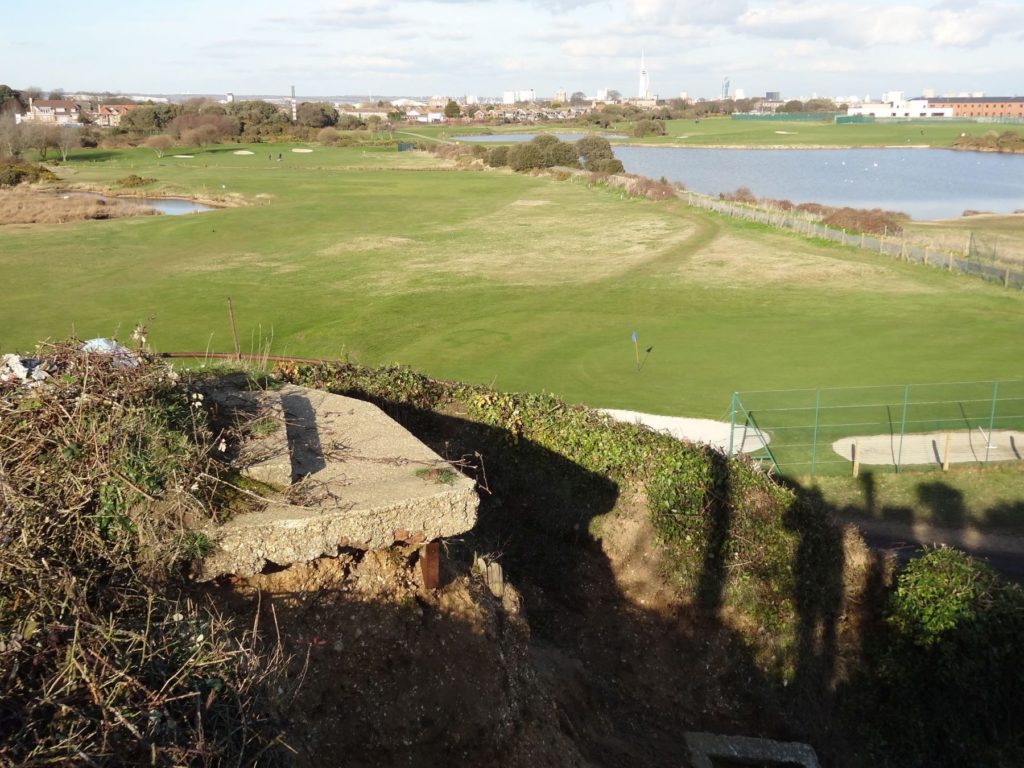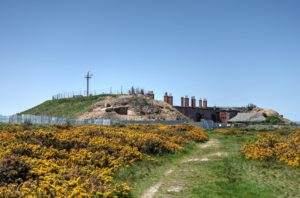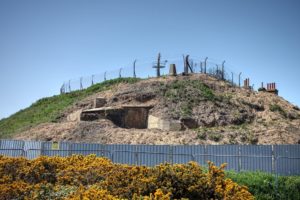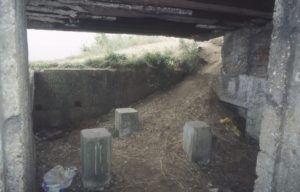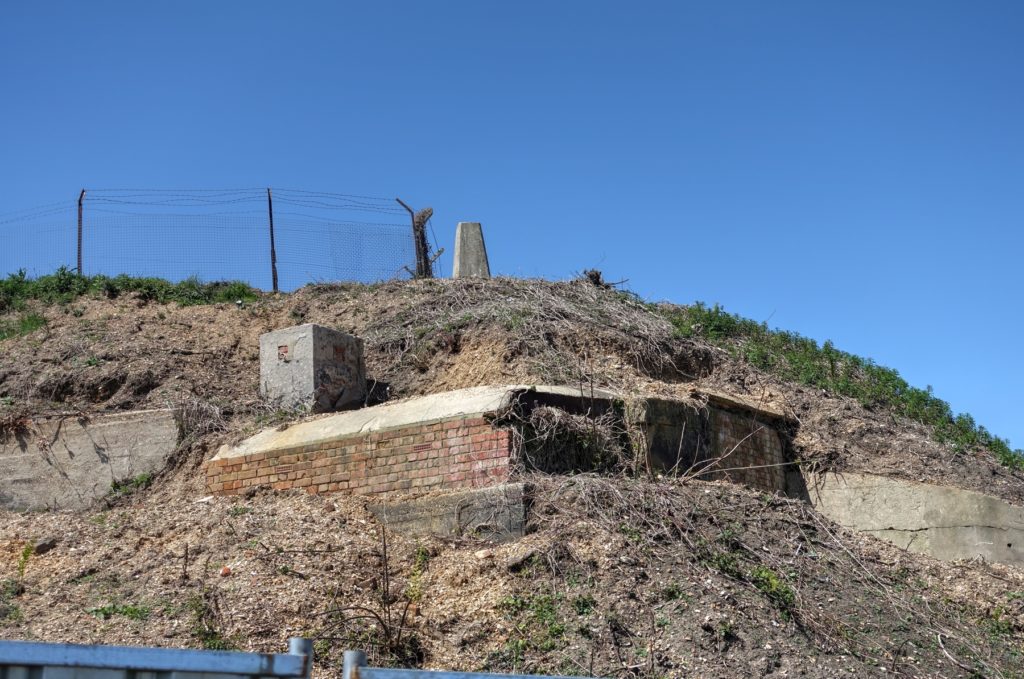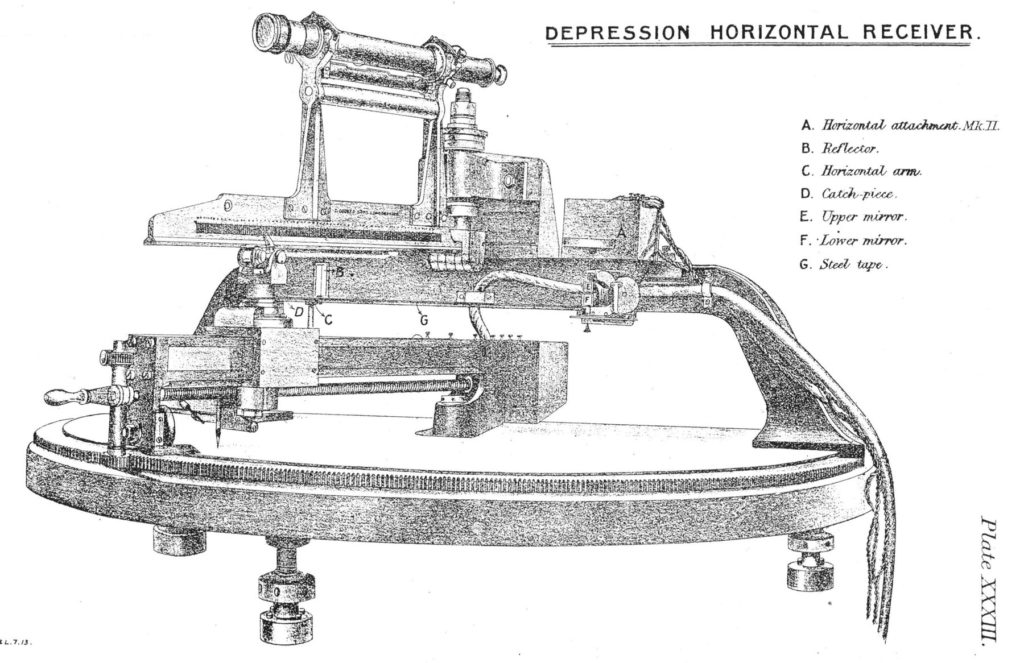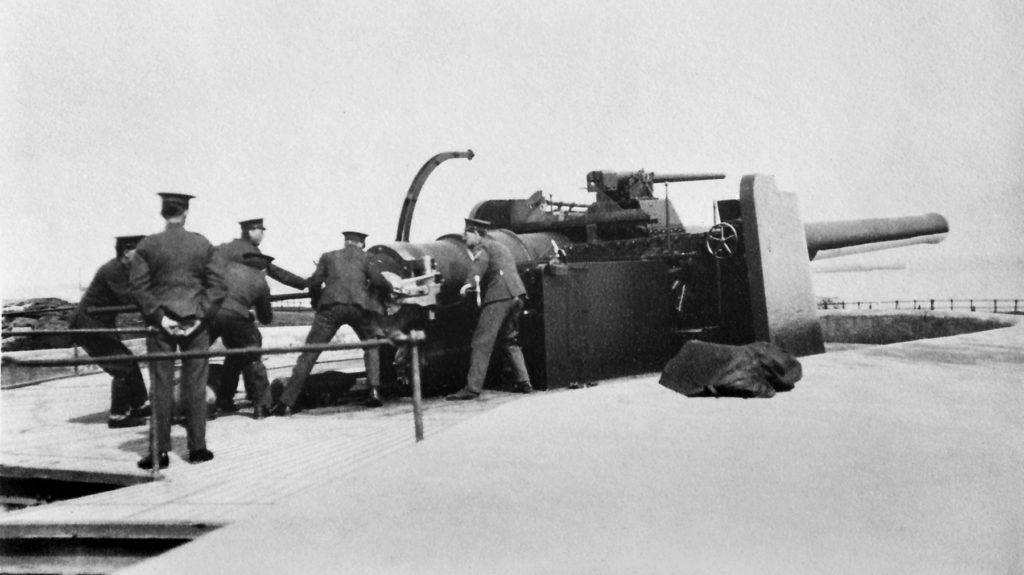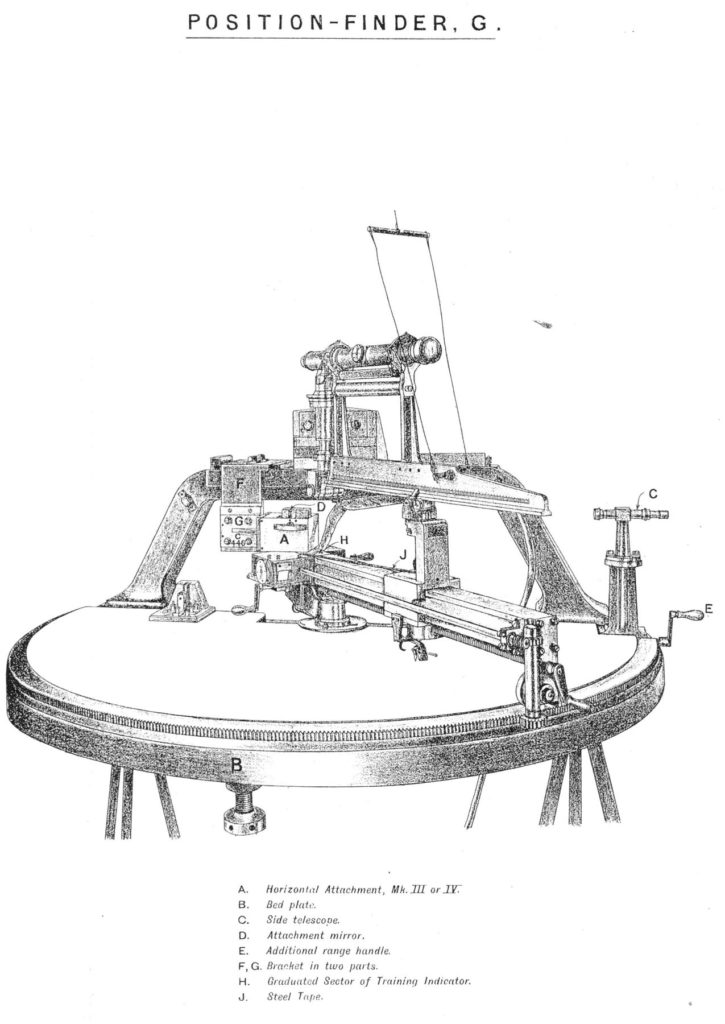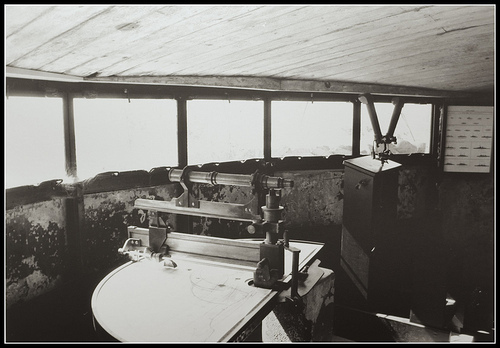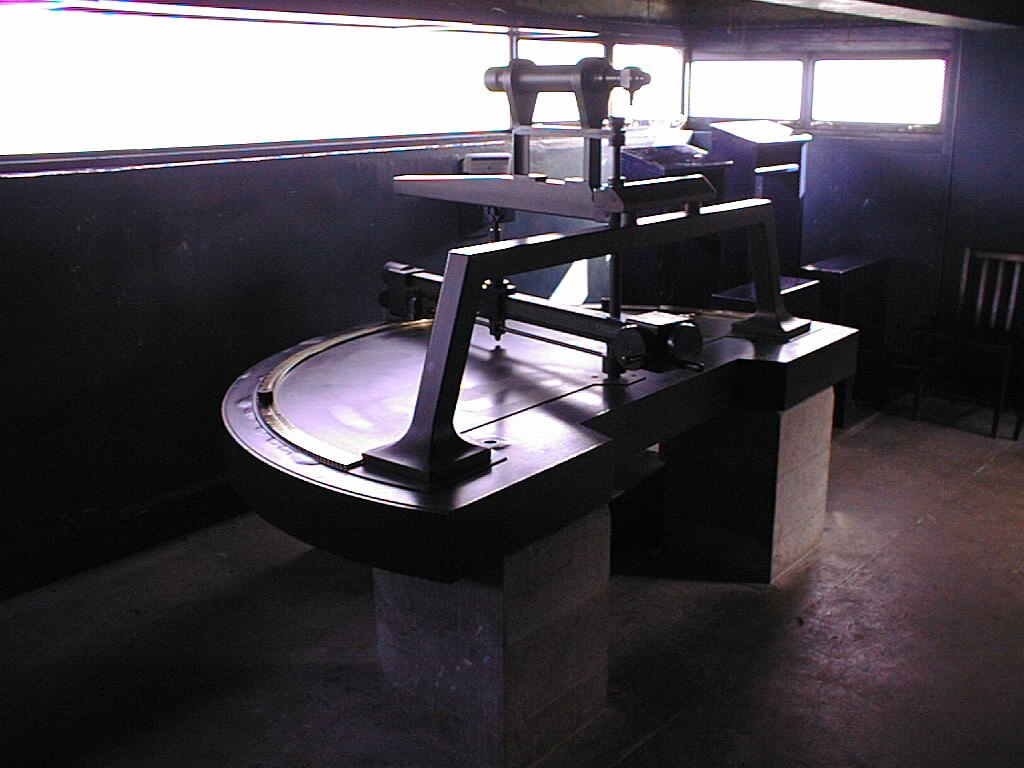Walking out along the Bay towards Fort Gilkicker and you will find many vestiges of our past history. As you walk along the shingle path that follows the route of the old Royal Engineers’ Military Railway and you approach the end of the earth bank that hides the Victorian splendour of Gilkicker Fort, you should notice a concrete and brick structure half way up the slope of the bank. What was it for?
This is a Receiving Cell for a Watkin Long Base Range Finder circa 1890. This was state of the art technology when it was installed. Top Secret and very sophisticated it was a piece of Military engineering that was far in advance of anything that any foreign power possessed at the time.
As the old guns inside Fort Gilkicker became redundant and obsolete in the 1890s the fort was remodelled to take the very latest Coast Defence weaponry. This consisted of two 6-inch Breech Loading guns on the east roof and two huge 9.2-inch Breech Loading guns on the top of the fort at the west end. These worked in conjunction with two more pairs of 6-inch and 9.2-inch Breech loading guns at the western end of Stokes Bay on No.2 Battery and Browndown Battery.
These eight guns needed accurate range finding in order to track and destroy their targets; enemy warships entering the Solent intent on bombarding the Dockyard.
Major Watkin first tested his technology on Headon Hill in the Isle of Wight. More tests were carried out at Bovisand, Plymouth. As a result Fort Gilkicker was fitted with two receiving cells for these extremely accurate Position Finders. They allowed the guns to track and aim the guns on their targets as they sailed in front of the fort.
A transmitting cell worked in conjunction its corresponding receiving cell using trigonometry with pin-point accuracy to aim and fire the guns. Each cell had a telescope that allowed the observer to track the ship. This transmitting instrument sent its reading electrically down a cable to the receiving cell where another telescopic instrument also tracked the target. By triangulation the apparatus calculated range and bearing of the target. This was sent electrically to the gun platform where it was displayed on a dial, allowing the gun commander to accurately aim his gun without needing to see the target. He set range and bearing, fired, and hit his target all in real time! The observer in the receiving cells could also fire the guns at the exact moment necessary to bring the shell and the target together.
The technology was still in use until the abolition of Coast Defence in 1956. Gilkicker however was disarmed in 1906 and the cells lost their function and instruments.
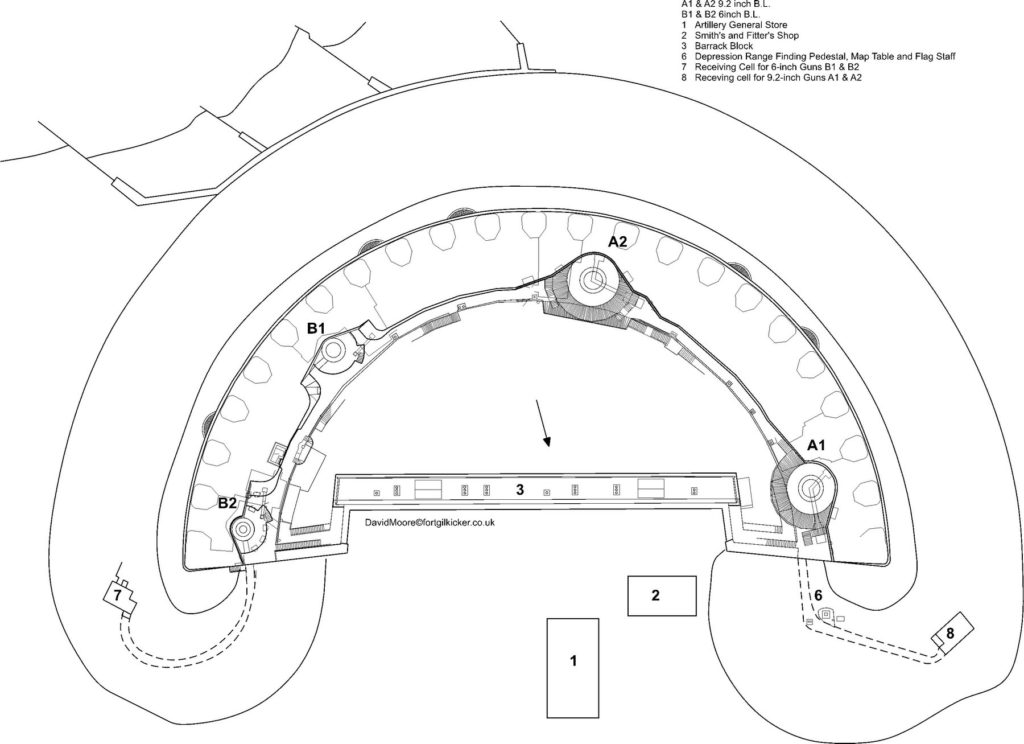
The transmitting cell for the Gilkicker 6-inch BL guns was on Fort Monckton. The receiving cell is still on the earth bank at the eastern end of the fort. The transmitting cell for the 9.2inch guns was on No.4 Battery, now completely destroyed. The receiving cell is still on the west end of Gilkicker’s earth bank for us all to see as we walk past.
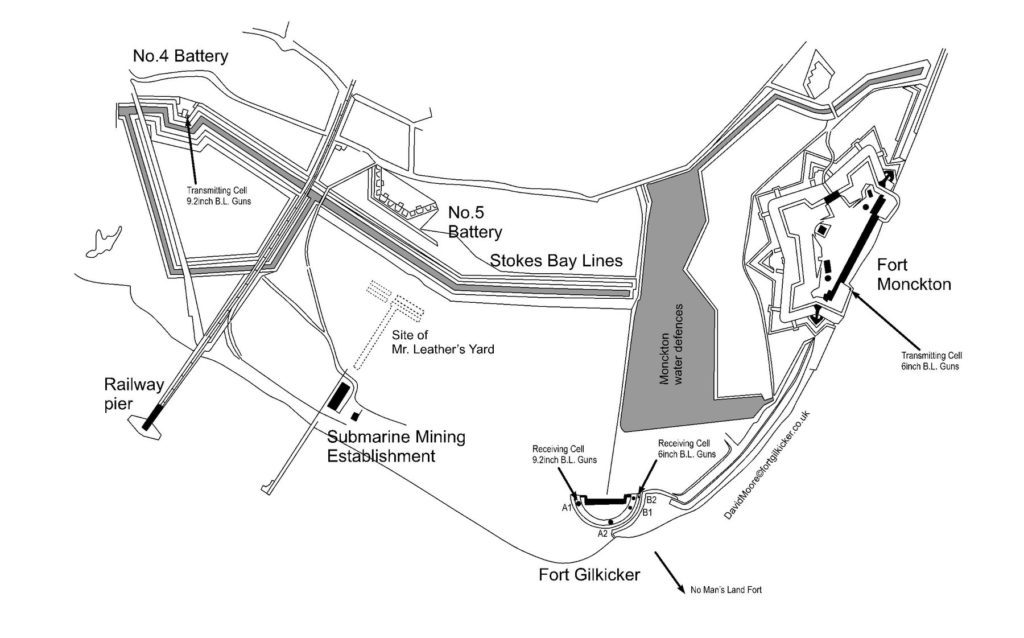
Fort Gilkicker was fitted with Type D Position Finders.
When (if) the earth bank is removed during the modern development plans for the fort, the ends containing the cells will remain as viewing platforms. In what condition we cannot determine. Sadly they have both been trashed, covered in graffiti and partially destroyed by vandals gaining access over the years since they ceased to be in use. They have survived a hundred years only to be wantonly attacked by individuals that see no value in our history. For a while they were bricked off to prevent entry but the vandals soon broke in again. Their significance to the history of our area has sadly been forgotten.
